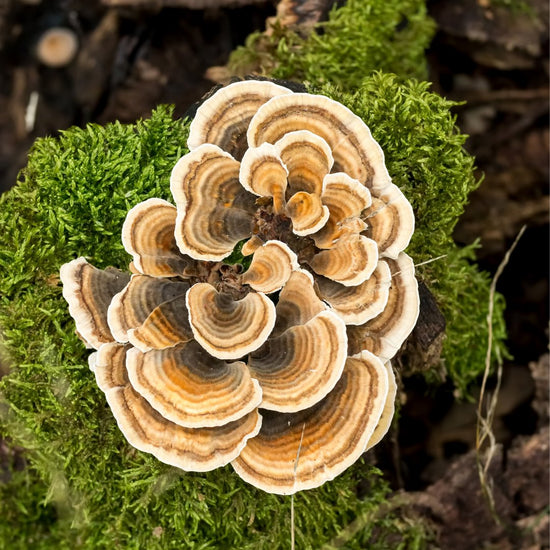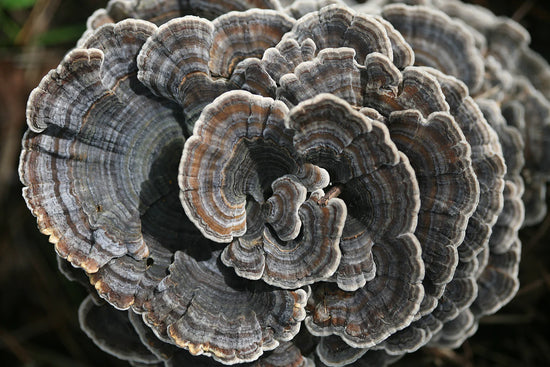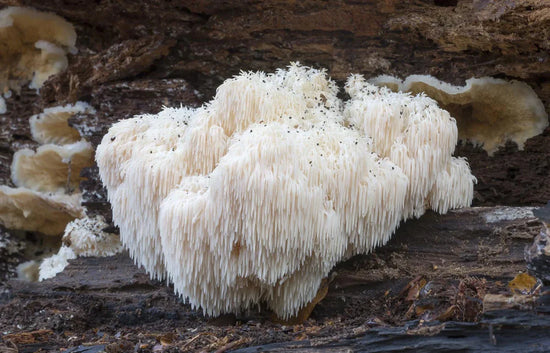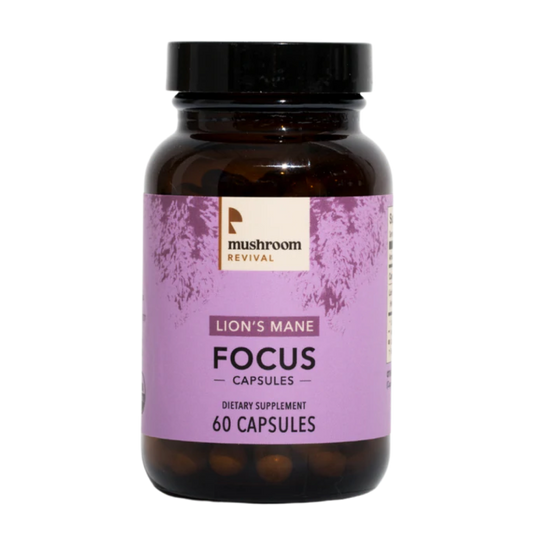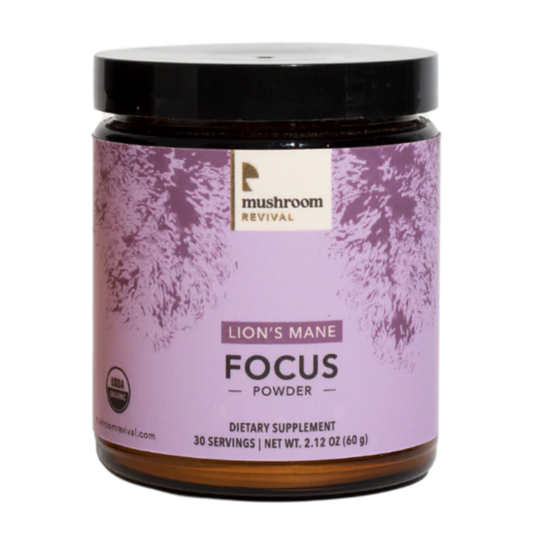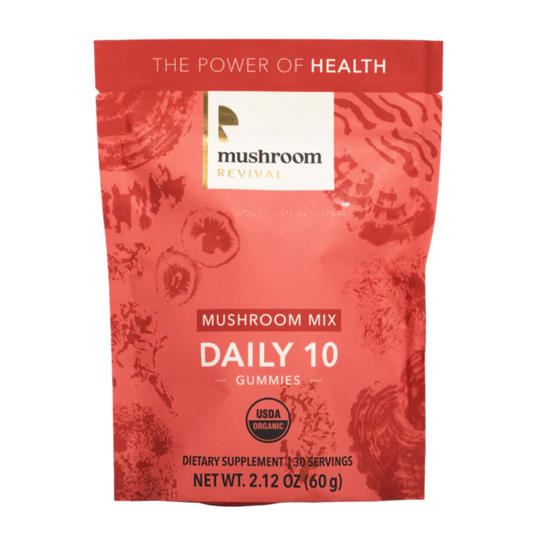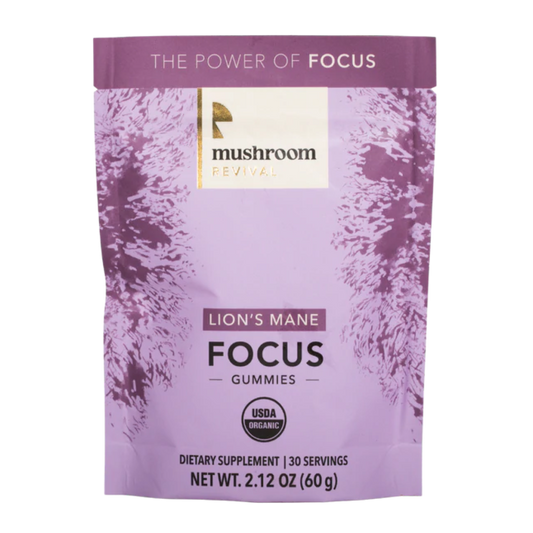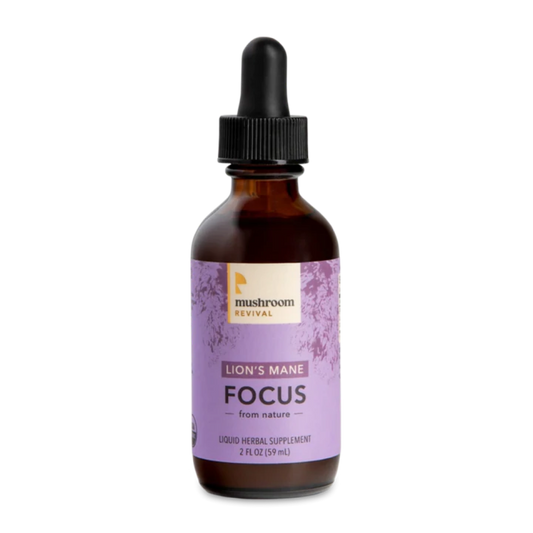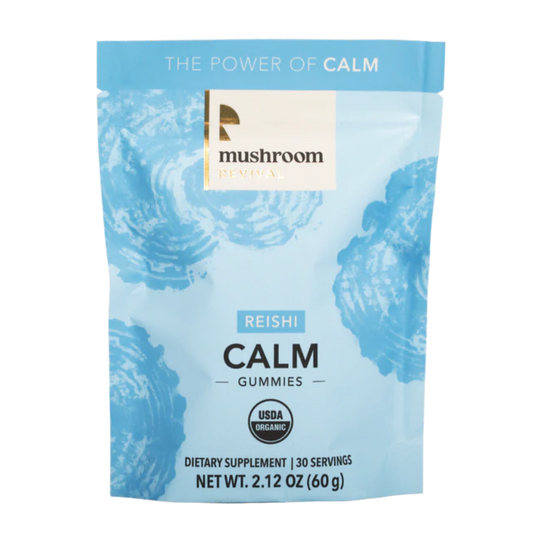Mushroom Embroidery with Amanda Cobbett
Alisa Nappa
">
.js?container_id=buzzsprout-player-&player=small"
type="text/javascript"
charset="utf-8">

Amanda Cobbett is an award-winning textile artist with over 25 years’ experience making realistic three dimensional embroidery sculptures of mushrooms and lichen. They are so life like it will be hard for your brain to process they aren't real. We sit down with Amanda and chat about her artistic exploration of nature.


Sign up for our podcast giveaway here. Our next winner will be selected on October 30, 2023 and contacted via email.
TRANSCRIPT
Unknown Speaker 0:11 Welcome, welcome. You are listening to the mushroom revival podcast. I'm your host, Alex Dora. And we are absolutely obsessed with the wonderful, wacky, mysterious world of mushrooms and fungi. We bring on guests from all around the world to geek out with us, and go down the rabbit hole of all things mushrooms. So today we have Amanda to talk about mushroom embroidery all the way from the UK. So Amanda, how you doing today? Unknown Speaker 0:41 Hi, Alex. I'm good. Thanks. Great. So why don't you give a little intro to the audience for people that don't know about you and what you're up to. Unknown Speaker 0:52 My name is Amanda COVID, and I and an embroidered embroidery artists. So Unknown Speaker 1:03 I trained as a printed textile designer, and I now Unknown Speaker 1:11 have evolved from botanical illustrations in textiles to three dimensional Unknown Speaker 1:19 embroidered sculptures. Unknown Speaker 1:23 And they're, they're pretty crazy if I mean, they look so realistic, which is one of the big reasons why brought you on. Unknown Speaker 1:34 And unfortunately, this is not the perfect medium to display your art, because it's so visual. But we'll we'll have some pictures in the show notes and definitely plug your any, any way that people can look at them. And you should definitely check them out as you're listening to this episode because they are extraordinary. Unknown Speaker 1:58 So how did you get into the world of both embroidery and mushrooms, and what was the point that they kind of coincided? Unknown Speaker 2:08 Well, I think I've obviously always been interested in nature from a child I was Unknown Speaker 2:15 out playing in the dirt for for the with my brothers for the majority of my childhood. And if I wasn't doing that I was typical 70s Child Unknown Speaker 2:27 sewing and doing handicrafts with my, with my mum. And I think that I've always loved making things. And I totally followed a creative education and career. Unknown Speaker 2:46 And I think that Unknown Speaker 2:48 it obviously you don't, I don't think you think of embroidery and mushrooms necessarily or fungi or liking any of these things going together. Unknown Speaker 2:59 However, Unknown Speaker 3:01 the technique really lends itself to, Unknown Speaker 3:07 to the medium. Unknown Speaker 3:10 And I started doing this because of a natural interest of discovering things in the forest. And it was actually during my, Unknown Speaker 3:19 my, my daily dog walks that I would start dis you know, finding all sorts of little things, taking time to walk and look at stuff and consider how I might be able to make something that's three dimensional. And obviously, if I trained as a printed textile designer, everything that I made was completely flat. It was like, you know, like a fashion or refreshing print. It's a it's a flat flat process. And Unknown Speaker 3:51 when I when I kind of it was a frustration that actually what what I actually wanted to do was returned to the to those sort of childhood memories of physically making something and Unknown Speaker 4:06 with the aid of just a domestic sewing machine. So there's nothing special about the machine that I used to create my embroideries. Unknown Speaker 4:16 I started to experiment having never done embroidery before. I started this just over 10 years ago as a complete novice, so I had I have no formal embroidery training, just my my visual skills and the and the Unknown Speaker 4:38 the creative process that I've learned throughout my my textile career. So I suppose Unknown Speaker 4:44 yeah, the two interest in botanical illustration and Unknown Speaker 4:51 being in nature, then sort of Unknown Speaker 4:56 led on to Unknown Speaker 4:59 you Unknown Speaker 5:00 At the next, the next level of how could I use my love of textiles use my love of botanical illustration, my love of nature, and this kind of it's like a culmination of, of all things that have sort of happened in my life that sort of arrived at this point to, to sort of, you know, to make these Unknown Speaker 5:21 embroidered sculptures that I think Unknown Speaker 5:25 when people I think you get, you need to look at them to, to understand, because I think a lot of people say, what, how do you make a three dimensional embroidery? Because you'd always of course, you'd assume that an embroidery is flat. Unknown Speaker 5:42 But actually, you know, there's quite there's, there's a few techniques involved in order to make that. But I suppose the Unknown Speaker 5:52 Yeah, if you think about embroidery, you'd assume that it was Unknown Speaker 5:57 two dimensional. And I think that the, the surprise of it being three dimensional is, is something that, you know, I've really enjoyed exploring over the last 10 years. Unknown Speaker 6:11 It is, it is really fascinating. I think that is the essence of a good artist, which is thinking outside the box. And something I just went to an art show recently. And there's this artist there that Unknown Speaker 6:27 only focused on frames. And then the whole point of the art, which I found really fascinating was, you know, they were like, yeah, for as long as we can remember, there's been amazing art. And they're all kind of in the same frame. You know, it might be embellished with, you know, some cool designs, but the focus is on the square inside and not the actual frame. And the artists was like, Well, I just wanted to focus on the frame because nobody else was really doing it and made these really intricate, beautiful frames. And it was, it was it was just funny as just thinking outside the box is similarly what you're doing. You know, it's like, well, why does it have to be 2d? Unknown Speaker 7:17 Why can I make it 3d? And? Unknown Speaker 7:21 Yeah, so yeah, I think that's great. And I think I think when you're Unknown Speaker 7:27 especially if you're, you know, I'm interested in creating sculptures. Sorry, Alex. I'm gonna have to stop. I'm really sorry. I've got a cat in here with me. And He's snoring and I've got to get him out. Unknown Speaker 7:40 Sorry, Mittens Unknown Speaker 7:43 out. Unknown Speaker 7:46 Okay. Unknown Speaker 7:49 Sorry. Oh, you're good. I just can't I can't concentrate. And Unknown Speaker 7:58 God, he's such a nuisance. Right. Sorry. Can you? Can you just ask me that? Yeah, I'm really sorry. So anytime I've seen embroidery it is, you know, like you're saying this, this 2d thing. And I've seen you know, people. Unknown Speaker 8:14 I don't know exactly what it's called. But it's fabric held in this circular. Most time wooden frame. Yeah. Right. And an embroidery hoop? Yeah. I think traditionally, that's how most people would perceive embroidery in an embroidery hoop. Yeah. And so I've watched a few of your videos online. And it seems like you have a bunch of different styles in which you use or tricks that you use, depending on what you're creating, whether it's like in or mushrooms, it seems like you Unknown Speaker 8:47 you like burning a lot of stuff Unknown Speaker 8:50 in different ways to, you know, like burning around the lichen versus burning the stem of, you know, like a belief that you are making it Yeah, it seems like you have a lot of tricks that you're using. Was that are all these tricks that you're using just trial and error. Oh, absolutely. Yeah. I mean, the burning thing is very much about decay. Because I feel that I want something to look realistic. And that's the whole point is that, you know, the things that I find, and then that I recreate, I want them to appear as if they could be real. So, you know, I'm trying to, I'm trying to trick you into thinking, is that real? And then for your brain to go, Well, how could it can't be How could that be real because it wouldn't survive. So yeah, so the burning thing is very much about adding that tiny bit of Unknown Speaker 9:51 decay. You know, if you if you were to find something in the forest, it's, it's sort of imperfectly perfect, isn't it? And that's what Unknown Speaker 10:00 Oh, that's I guess that's what I'm trying to do. Unknown Speaker 10:08 And I recently just went to Panama a few months ago, and there's this really famous indigenous art, I don't know if you've ever seen it. There, it's, the pieces are called Molas. And Unknown Speaker 10:24 it, it became famous because there are Unknown Speaker 10:28 many different fabrics on top of each other. And, you know, I don't know that each fabric is cut with a certain design. And so the final product is layers of different colors and patterns, then that all come together in in, it creates this really beautiful depth of of colors and, and and patters and it reminds me of your work a lot. It is 2d, but it just adds a little bit more depth because of all the layers. Unknown Speaker 11:04 And so yeah, it seems like this world is pretty endless. And one thing that I was curious, it seems like one Unknown Speaker 11:16 one of the kind of secrets behind your work is is using biodegradable. I don't know what the word is that what you what you actually embroider onto that? Yes, so that's Unknown Speaker 11:30 it's a dissolvable fabric. So, in order for me to be able to Unknown Speaker 11:37 create a 3d embroidery, you have to obviously be able to sew it flat first. So that's why so I do use an embroidery tape like you would see it as a traditional embroiderer. Unknown Speaker 11:52 And I put my dissolvable fabric which is I use a combination of two or three different dissolvable fabrics, and there's several out there on market. Unknown Speaker 12:03 But that stretched into my embroider is frame and then I sew my stitches. So they are interlocking with each other because if I was just to sew backwards and forwards straight, Unknown Speaker 12:20 obviously it would all unravel. So you kind of have to work out a way of being able to. Unknown Speaker 12:28 So enough, your what I'm doing is I'm embroidering my own new fabric by layering over and over again. So a bit like the fabric that you were just referring to. I'm kind of doing that with stitches. So I'm overlaying Unknown Speaker 12:46 loads of different colors to to create a realistic effect. Unknown Speaker 12:52 And then once I've once I've got that, I've got the base of my of what it is that I'm making, whether it's a piece of bark, or a piece of liking or the cap of fungie. Unknown Speaker 13:07 Once I've once I've got the base colors down, I would then take it off my hoop and wash away Unknown Speaker 13:15 the dissolvable part. So what I ended up with is a sort of mesh type fabric, which I can then sew back into with some more colors and then I can start to sculpt with it because, you know, Unknown Speaker 13:32 the dissolvable fabric allows me to it. If I wash it just enough in the neck, it leaves a tiny bit of size, sort of into the into the thread. Unknown Speaker 13:47 So it gives it some structure. And with that I can then sew back in. And I've already kind of molded my shape by then. So there are some tricky moments on the same sheet, especially if I'm doing something that's really really tiny. You know, I've got the I have a light which has got a magnifier on it and my glasses are super magnified. Unknown Speaker 14:12 So it just allows me to do really close and intricate work. But it is all about layering especially if I'm making Unknown Speaker 14:21 the liken and a bark in order to put some, like if I was making some travesties Unknown Speaker 14:29 you know, like a Turkey Tail fungus. That's loads and loads of layers. And it's time to it's time consuming, but But you know, I get so absorbed in it. It doesn't feel like it never feels like a chore. It's exciting because you see something appearing before your eyes and you're never each time it's going to be different. You're never quite sure how it's going to end up you know, I haven't got this. Unknown Speaker 14:57 You know I've got the real thing off and in front of me that I'm Unknown Speaker 15:00 replicating, Unknown Speaker 15:02 but I wouldn't. I'm not. Although the techniques are Unknown Speaker 15:09 the same, the way that you create with the needle is a bit like drawings. So it's really down to you know how where I'm where I'm placing the needle on my, on my dissolvable fabric is where I'm going to create that piece of work. So, you know, it's like an artist, you know, if you're, if you're doing a painting and you're putting dogs of paint onto a canvas, it's a similar thing with using needle and thread. Unknown Speaker 15:40 Who and What have been your biggest inspirations for for your work? Unknown Speaker 15:46 Well, Unknown Speaker 15:48 well, being being outside in nature is a massive, massive inspiration. Unknown Speaker 15:54 There's so many artists that I love, I love Unknown Speaker 16:01 it, and it's not, I guess, people who can, who can really express themselves in Unknown Speaker 16:08 the pieces that they create. There's a lot of British artists who I really love David Hockney, Grayson Perry that to sort of contemporary British artists who I really love, and I love their style and their humor, and the way they use color and line. Unknown Speaker 16:30 But, but really just just being able to be kind of unique. And Unknown Speaker 16:39 you know, I feel that when you win as an artist, you sort of you definitely give away a tiny piece of your soul when you create a piece of work. And, Unknown Speaker 16:52 and that piece of work has an integrity because because it comes from your heart. And when I'm creating my pieces, I feel that I'm just imparting a little bit of myself all over the world of these pieces of work that I've just, you know, little bit of me it's gone. Gone everywhere. And, you know, there's that's what I suppose Unknown Speaker 17:18 so I is that that isn't that's not an inspiration. I realize I know that but that's Unknown Speaker 17:25 it, I kind of Unknown Speaker 17:28 it comes every it's something that comes from within, I think. Unknown Speaker 17:33 And I'm not I'm not so I don't feel self conscious about my work in any way. I feel that it's Unknown Speaker 17:41 every day I it, it may be sounds a bit trite, but every day is like a celebration of what can I create today because I'm using my hands, I'm using my my creativity. And Unknown Speaker 17:55 yeah, so I kind of guess you know, apart from, apart from the obvious artists that I that I love and Unknown Speaker 18:02 most of it is just being outside and being inspired by everything that I can see around me. Unknown Speaker 18:10 And in one of your videos, you you said that you love to go for a daily walk with your dog and find new mushrooms and fungi and like in to create this this art what what would you say are the biggest lessons that you learned from your relationship with with nature over the past 25 years. Unknown Speaker 18:38 Um, patience, I think and Unknown Speaker 18:46 understanding or looking, allowing things to Unknown Speaker 18:52 you know, if I've picked something up allowing it to Unknown Speaker 18:56 just observation and now you know, things start to decay and Unknown Speaker 19:06 I've learned so much about the, the natural world and Unknown Speaker 19:13 you know, how we should be Unknown Speaker 19:16 take care and look after what we have and Unknown Speaker 19:22 be gentle with nature. I think that's the that's the thing, you know, since Unknown Speaker 19:29 since starting to create these kinds of these embroideries that I've been making, it's certainly about Unknown Speaker 19:38 understanding more and I think the more Unknown Speaker 19:43 in depth you go with it and start looking for different funghi in the forest and Unknown Speaker 19:51 you know, knowing what you're looking at and referring back to your you know, I was referring back to Unknown Speaker 20:01 My reference books and because, you know, I can't bring everything home with me, I'm not out there, in the, in the forest, picking everything and bringing it back. So, you know, I have learned a lot about the foraging code and about what you can take and what you can't take in how to be respectful. And, you know, those those things as an as an artist, especially if you're creating pieces that are that are inspired by nature, you don't want to be destroying it by you know, that's, that's not the idea you want, it's very much about Unknown Speaker 20:38 if I hope it's a comment, you know, the work that I'm creating is Unknown Speaker 20:45 a comment on this is what we have in our world. And you know, as soon as you put it into an art gallery situation, it makes you think differently about it. Whereas, you know, quite often if we're walking in the forest, we're, we're less likely to appreciate the the minut detail that we have, because we're often looking at the bigger picture, you know, and of course, foragers are there out there, for for that very reason. Unknown Speaker 21:17 But, but also, just to admire the beauty, to admire the beauty of nature is a massive thing, isn't it, and if we could all just take little time to be able to do that, or have the privilege to do that, because I realize not everybody does have that privilege, I certainly, you know, Unknown Speaker 21:34 I'm still so lucky that I do have that privilege to be able to do that. And then to make make something in response to that. Unknown Speaker 21:45 You know, hopefully, Unknown Speaker 21:48 when people are looking at my work, they can, they will really appreciate it for the art but also for for what we have, because we you know, what I'm making are our direct replicas. So I'm not, I'm making them to the same to the size that they are. And to the colors, you know, I'm very careful about the colors that I pick, I've got, you know, over 500 threads sat here in my studio, so I'm, you know, I'm trying to, to, to replicate nature. And of course, you know, Mother Nature is going to win every time but, you know, I just, I just taped that what I'm doing justice to, Unknown Speaker 22:28 to, to what I can find in you know, wherever I'm going to, to replicate these pieces of work. So this question is a little left field, and you might resonate or not at all, fun. Unknown Speaker 22:45 You know, I imagine that you, you have to take a lot of time to Unknown Speaker 22:52 work with a single species, right to try to replicate it and you're analyzing it pretty thoroughly with your super magnified classes and looking, you know, really closely at all the details and really forming a relationship with that species on a deeper level than I think Unknown Speaker 23:15 most people for sure. Do you have you ever gotten any insights from the mushroom or like in that that you're working with? Unknown Speaker 23:29 You know, Unknown Speaker 23:31 yeah. Unknown Speaker 23:34 Well, I think that Unknown Speaker 23:37 the thorough I started doing this, and knew nothing. You know, like I said earlier that I trained as a printed textile designer and I actually specialized in botanical illustration, but I didn't have that same relationship with Unknown Speaker 23:56 the plants and the things that I illustrated Unknown Speaker 24:00 you know, doing it as a printed textile design I didn't I didn't have that relationship that I have with nature. Now you know, only as a child when you're not really thinking about it in the same way so now Unknown Speaker 24:19 you know, I'm taking like you say I'm taking that time so I might Unknown Speaker 24:23 chop something up with my scissors just to see what it looks like on the inside you know, for cutter cutter section through Unknown Speaker 24:33 so Unknown Speaker 24:37 what am I learning I think Unknown Speaker 24:42 I think it helps me produce a piece of work if I if I'm especially because touch is such a relevant thing for me. Unknown Speaker 24:52 So yes, I Unknown Speaker 24:55 studying something so Unknown Speaker 24:59 closely. Unknown Speaker 25:00 He does have you have a completely different relationship with with that piece, you know, that I'm going to make into a piece of work then up then I would have had otherwise. Unknown Speaker 25:13 You know, I think learning the learning through through touches, Unknown Speaker 25:19 too be able to create a piece of work is hugely important. Unknown Speaker 25:25 And it's something actually I've always I've done all my life even as a child, you know, I would I, you know, had my hands in the dirt. I was interested in how something felt. So from that respect, yes, I think I do have very close relationship with with these pieces. Unknown Speaker 25:45 Does that answer it? I don't know. Unknown Speaker 25:47 Yeah, it would. Unknown Speaker 25:50 It I always love hearing Unknown Speaker 25:55 what we're such I feel like we're such a sight dominant species. And, and Unknown Speaker 26:02 I always love meeting people that another sense is more wouldn't say dominant for them, but they have more closer relationship with another sense. Unknown Speaker 26:16 Yeah, it is. Yeah, I feel like there's so many different layers to this world, and so many ways that we can interact with this world. And usually touch isn't Unknown Speaker 26:30 something especially relating to mushrooms, it isn't something that we really focus on. As much as really sight. So yeah, I think that's really cool. I think, you know, you, you pick up the mushroom, and it's, it's that sort of cold claggy but smooth, and potentially dangerous. Unknown Speaker 26:54 You know, it's that it's that Unknown Speaker 26:57 this one could kill me kind of feeling or I could eat it. Unknown Speaker 27:03 Or I could just embroider it, you know, it's that it's that Unknown Speaker 27:09 there's something exciting about that. Unknown Speaker 27:14 You know, I'm not gonna I Unknown Speaker 27:17 honestly, I don't eat anything. Unknown Speaker 27:20 Because Unknown Speaker 27:22 you never know. Or even the obvious ones. My family won't let me cook any, any of fungi go this one safe, they'd like nap, you're not giving that for dinner? We're not having it's because they don't actually trust me. Unknown Speaker 27:37 But yeah, I think, Unknown Speaker 27:40 you know, I'm one of those kinds of people that would, that would go along the forest, go along the trees and just gently caress my hands across all the tree trunks just to see how they, you know, because they all feel different. And? Unknown Speaker 27:56 And is this like, that is like us, isn't it? We've all got a we've all got our scars and our imperfections. And Unknown Speaker 28:07 and some of those things can we can see, obviously, but it's not until you touch something that you can really get close relationship with it. Unknown Speaker 28:18 What would you say is the hardest part of this journey and it could be Unknown Speaker 28:25 a single moment or a certain technique or day to day? But what would you say? Is is the hardest part? Unknown Speaker 28:35 Gosh, that's such a difficult question to us because there isn't a hard part. I don't know. I don't think there is I'm Unknown Speaker 28:47 I love doing this so much that I Unknown Speaker 28:51 that even when something is really challenging, that's it's sort of like perfect torture, because Unknown Speaker 29:02 you know that you will find a solution to it. It's, I don't really allow things to defeat me. Unknown Speaker 29:13 You know, sometimes I think I've been sewing all day and let me just step away for half an hour and Unknown Speaker 29:21 go on Instagram or something Unknown Speaker 29:24 or go for a walk or I quite often resolve sewing dilemmas with a with a dog walk. Because it just takes you know, just to take me away and get out in the fresh air. Good Medicine. Unknown Speaker 29:41 Yeah, oh my goodness. It's just the perfect solution to a problem sometimes. Unknown Speaker 29:49 But I don't I never I the the challenge is great. It's it's exciting and Unknown Speaker 29:59 I don't Unknown Speaker 30:00 I think when sometimes if you struggle with, if if you ever find yourself struggling with a piece of work, or I don't know, if an artist is struggling with a paint, there are things that I struggle with, let's, you know, I'm not. Unknown Speaker 30:12 Not everything goes right all the time. But it also, sometimes the mistakes lead you to something else, or a different technique or something that you that you didn't think that you were going to do. And Unknown Speaker 30:27 you know, if something's taken a long time, I did a piece of work recently, I made a piece of this piece of bark, and the lichen and it was really, really intricate, and it had loads and loads and loads of layers. And I sort of felt like a marathon and I'd finished it and I thought, Oh, my goodness, I just need to not see that for a couple of days. Unknown Speaker 30:49 And then I might, I might love it more, because I'm not sure how I feel about it. So I put it away, and then I get it out again, like, oh, actually, that's all right. Because you think it wasn't? It was it? You know, it felt like life doing this, do it making this piece of work, and then you just need to step away from it and then come come back. And actually other people, you know, you could totally tear apart your own piece of work and go right, that was a mistake. That was a mistake. You know, I didn't do that. Like I wanted to do it. But But why would you because actually, Unknown Speaker 31:26 most people don't see the imperfections that you see as an artist. And Unknown Speaker 31:32 I, like I said before, I think if you've if I put my heart and soul into this, and Unknown Speaker 31:40 if Unknown Speaker 31:42 I think sometimes those things do show through you hope that they show through. Because when people look at them, they are Unknown Speaker 31:53 not scrutinizing it with the same eyes that you're scrutinizing it with? And Unknown Speaker 32:00 yeah, so I don't have I don't have a bad day, and I don't I've, you know, I've learned loads I've learned, you know, I'm learning something every day about, Unknown Speaker 32:11 about what what thread can and can't do. And I'm pushing the boundaries of that all the time. And I think that's because I didn't have any formal training as an embroiderer. Unknown Speaker 32:24 So, you know, I don't know what the rules are. embroiderer. Yeah, it's almost better. You're always in beginner. Yeah. So sometimes we can be really restricted by the rules. And, yeah, that's something that exactly, you might not relate. But in in mushroom cultivation, I noticed that people who come from a different field into mushroom cultivation tend to be better than people who Unknown Speaker 32:53 studied mushroom cultivation singularly, and because they're just bound by Paul, this is the way to do it. And then I see an engineer come in, and they're just, you know, they studied engineering, and they're like, Well, why not do it this way? And yet, it's a different it is it's a different mindset. And it's kind of being allowing yourself to use your creativity. And it's like, if you don't know any better, then yeah, you can kind of get away with it. Right? Right. Unknown Speaker 33:29 What do you have a, either a favorite mushroom or like, in that you always go back to, you know, like, oh, man, I can always make more chanterelles or something, but boletes okay. The, the beliefs definitely, I just, they've got their own character. Definitely. Unknown Speaker 33:49 Yeah, that like, Shawn trails really, they're more difficult to make. I love making them and I love you know, I love them. But actually, the beliefs are like, sounds really weird. They're like, my little friends are alive. Yeah. Unknown Speaker 34:05 Yeah. And there's and, and there's, there's such diverse to tea as well. And, Unknown Speaker 34:12 you know, their little round caps there. They're just, yeah, definitely my friends the beliefs. That's amazing. And, and for for people. I'll try to link the one of your videos in in the show notes as well to kind of show the process but can you kind of walk through specifically for the Bolete I know that you use paper mache for the stem and there's a burning process and then can you kind of quickly walk through kind of what are the steps to make say bulliet for example. Unknown Speaker 34:52 So I usually start so I usually start with the, with the stem because Unknown Speaker 34:59 you Unknown Speaker 35:00 There are so oblique stems obviously they're all different but depending on which one I'm going to make so you know, if I'm going to make a birch believe then I was I would start creating the stem by layering up. Well, I have a roll of paper mache first and and I'll keep adding to it. Tiny little pieces so I'm so I'm getting the right shake. And then I'll maybe use my knife or I've got a sanding tool so when so when the paper mache is really rock card, I can then start sanding it away to make to really to Unknown Speaker 35:38 to get the the right shape and the right texture that you that you Unknown Speaker 35:45 find on the stem of a birch Billy and and then I would only the cover it with silk or a textured paper and then work again into it with. So sometimes if I'm using cover it with silk I may have embroidered onto the silk first and then I apply that on and I make all the tiny little mycelial threads separately on the machine. And then I wash the dissolvable fabric way put those are so those onto our hands, so those on Unknown Speaker 36:25 so I'm kind of making the base of it first and then because the caps like the celebration, isn't it, so you so to make the cap. Unknown Speaker 36:36 I've got my dissolvable fabric into my embroidery hoop, and then I make up layers of that. Unknown Speaker 36:46 And then I'm adding the like the spool bits on the bottom. So that's a separate bit. And then it's self supporting. So I'm not stuffing anything, so I'm not stuffing the cap with with any fibers or anything, they when I make the pieces, they are all self supporting so that there's kind of hollow in the middle. Unknown Speaker 37:12 And I saw those two bits together and then I attached them to the stem so and then a kind of afterwards if I need to burn little bits away, burnish bits or add any kind of decay. Unknown Speaker 37:25 I do that at the end. Unknown Speaker 37:28 And then once I've done all that, and then everything's completely dry, I then manhandle it by drilling a bit big hole in the back of it in order for me to attach a perspex rod, which goes into the middle of the stem at the back so, so at a right angle to that, in order for me to then mount it into my display cases. So it kind of when you when you look at it straight on it, it appears to look as if it's floating within the case. And the whole point of me Unknown Speaker 38:00 putting them into these cases that I use is that you kind of almost get a 360 degree view of of the piece of work because I kind of feel that if you've gone to the effort of making something that is three dimensional, you should be able to see it all the way round. But also you kind of need a solution as to how you might display that piece of work. And the easiest way for you know, I don't want to have them just kind of laying around these these pieces of embroidery that so they they need it needs to have you know it needs a solution and that comes in the form of this perspex case, which is similar to a kind of Victorian Wardian case that that you know the plant hunters would have used Unknown Speaker 38:55 and that is easily then attached to the wall with with keyhole fixing so it's very smooth that attaches very easily to the wall and offers in kind of offers it offers people a solution about how they might display the their embroideries and it also the perspex cases Unknown Speaker 39:15 does proof so sort of protects it as well. Unknown Speaker 39:19 Yeah, but usually I I do put single pieces together but I actually quite like Unknown Speaker 39:28 well I what I would do is I would go for a walk I'll find various various funghi or or various liking Unknown Speaker 39:38 or various pieces of bark. So a lot of windfall things. I'm not picking moss or liking off the trees that would be wrong. So it's and then when I'm when I've collected these pieces, I got a grid reference where I found the original piece and all that information goes on with the certificate that comes with the Unknown Speaker 40:00 piece of work, you know, just because it gives it a provenance and I feel that that that bit is actually really important. Unknown Speaker 40:07 So yeah, so I like kind of like curating little collections of Unknown Speaker 40:13 funky all together or bits of like, you know, together or sometimes I'm mixing funky in liking, depending on what I found on whichever walk I've been or wherever I am. So, you know, for some of my exhibitions and commissions that I do for people, I, you know, it's specific to where they live, or Unknown Speaker 40:37 you know, if it's an exhibition that's specific to the area of the exhibition, Unknown Speaker 40:42 because you know, kind of feel like that's important you want to give a snapshot of that area. So Unknown Speaker 40:51 you know, I Unknown Speaker 40:53 if I'm walking in a specific area, I want people to know that I found these things in this area. Unknown Speaker 41:01 If you had unlimited time, money, resources, team, etc. What would you do, if anything differently Unknown Speaker 41:15 I would just love to do a huge, I'd love to have a huge exhibition. I'm currently working on this really lovely project that's taken me about a year or longer than a year actually now to complete. Unknown Speaker 41:32 I I'm quite happy that I'm the only one that's doing the work. I'm I feel precious about it in that Unknown Speaker 41:45 I feel I don't need anybody else to help me make embroideries. Although I would love I would love to do an exhibition that was a celebration of, Unknown Speaker 41:58 of all things like in are all things funky. And in fact, I I was a while ago, I was in an exhibition at Somerset House in London, which was a celebration of funky, which was incredible. It was lovely to be included in that. And I suppose Unknown Speaker 42:17 yeah, I don't know, maybe if I had unlimited amount of money, maybe I'll just buy a big forest and set up, set up home run live there and be happy loving. I mean, I'm happy anyway. But I mean, maybe that would maybe that would be the dream just to be immersed in the forest, forest, bathe in the morning and Unknown Speaker 42:35 live like that. Unknown Speaker 42:38 That sounds great. Unknown Speaker 42:41 But I think maybe in reality, maybe I'll just stay where I am and create these pieces. And Unknown Speaker 42:48 just if I love spreading the word of, you know, like, hey, there's, there's so much information in the forests that you if you don't know about go and have a look. Because it you know, I feel that if someone goes to an art exhibition, and they see my work, and they love my work, then perhaps the next time they're out for a walk in the forest, they will they will be not that I don't want them to be mindful of what I've created. I want them to see the work and go and when they're in the forest next time to maybe notice what's in the forest. Like, oh, there's there's that there's that like in that we saw those that funky that we saw in that exhibition? Do you remember that time you know, and actually, you know, the, if that's what my work does, if it draws people outside to go and look for things themselves, then I feel like my job has been done. That's all that's really what I'm interested in. So listening to this episode, and trying to visualize your work is amazing, but I really want people to actually see it with their own eyes and potentially be able to touch it and interact with it in person, if that's possible, so where can people find your work, potentially commission a work etc. What are all the channels that people can see and interact with with you and your work? Unknown Speaker 44:18 So they can find me on my website which is www dot Amanda cupboard.com and also on Instagram, which is an undercover embroidered nature. So if you put that in the search, I should come up Unknown Speaker 44:38 exhibitions I'm just finishing this large commission so Unknown Speaker 44:45 that will at some point be touring it's, I've I feel like I've embroidered the whole of the Scottish Borders over the last year. And that's almost coming to fruition so that will be exhibited. I don't know Unknown Speaker 45:00 If it's coming to the USA, I hope it is proximately when I give where, because because people might be listening to this episode A bit later after it's published. Unknown Speaker 45:12 So it should be finished by October 23. And Unknown Speaker 45:22 I'm hoping that it'll start touring by February 2024. Unknown Speaker 45:27 And you said in Scotland, all those details will be on my website. It won't just be in Scotland. It'll it. I'm hoping to tour it Unknown Speaker 45:36 throughout the UK and possibly Unknown Speaker 45:40 into the USA. Not sure yet. Because it's it's not my project, I've been asked to do the work in order for it to, to potentially Unknown Speaker 45:53 go on. Sure. Yeah, well, Unknown Speaker 45:57 I think I'm hoping that might happen. Yeah, I'm hoping that might happen. Also, I do send Unknown Speaker 46:05 work to the USA to Unknown Speaker 46:09 a great place. It's called Detroit garden works, which is in Michigan, and they usually get a collection every year, and their next collection will probably be with them in the spring of 2024. So there will be pieces available to buy, I get I literally get asked daily for you know, people email me and say, Please, can we commission a piece of work, which can, however, my waiting list is, is about two years. Because I try and fit in commissions and exhibitions at the same time. I mean, that's an incredible, incredibly fortunate position for me to be a little frustrating for other people that do want the work. Unknown Speaker 46:53 But that so that's why I try and make a collection, Unknown Speaker 46:58 especially for the USA. Unknown Speaker 47:00 Because otherwise nobody if I don't do it, if I don't, if I'm not strict with myself, then nobody gets to buy the work. It just ends up going into exhibition or into private collections. So yeah, so Detroit garden works, usually have pieces or Unknown Speaker 47:20 you know, have have collections, small collections each year. Amazing. Anything else you want to plug before we wrap it up? Unknown Speaker 47:30 No, go outside into nature, and go and look for stuff. Just look at it. Take a look at my my pieces on Instagram or my website and go and see if you can go and find them for yourself and do a little nature table. That's that's, I think that was my, my childhood and my my parents probably absolutely, you know, hated me, I was bringing in all the spiders, everything in with my acorns and my bits of moss and everything else that I used to find when I was a child. But there is that there is something amazing about that. And if everybody had could just bring a little bit of the outside inside, then bring them endless amounts of joy. Well, thank you so much, Amanda. I really appreciate it. Unknown Speaker 48:18 And thank you everyone for tuning in and tuning in for another episode. If you are listening from the UK, definitely check out try to see an exhibition hopefully early in 2024 or end of 2023 Depending on when you're listening to this and when it goes live. But wherever you're listening around the world, thank you so much for tuning in, definitely check out Amanda's work. It is phenomenal. And sometimes it's it's hard to tell if it's real or embroidery. It is so realistic looking. It is it's incredible. Unknown Speaker 48:59 And we don't have a Patreon or any way that you can directly support the show. But we do have a functional mushroom company mushroom revival, you can check out mushroom revival.com We have a whole line of functional mushroom extracts from powders to tinctures to capsules to delicious gummies all certified organic, super potent. Unknown Speaker 49:23 And we have a special coupon code just for podcast listeners. The code is pod treat. And it's a surprise code and we change it all the time. So you might get lucky. Try it out. And if you don't want to spend any money we have a giveaway going on. The link is in the bio you can win some free goodies we pick a winner once a month so you could be this month's lucky winner. So sign up there. And we also have a bunch of free ebooks and a bunch of educational blogs with right Unknown Speaker 50:00 Recipes and a bunch of fun stuff on the site as well as all the show notes for all the podcasts. Unknown Speaker 50:07 And my new book is also on there the little book of mushrooms. So check it out. And if you you know, leave a review that will go a long way to support the show. And if you learn something on this episode or another episode or just a fun fact about mushrooms in general, tell your friends tell your family tell the random person at the grocery store and keep this mycelial thread going we want more people not only invested into mushrooms and mycology but nature as a whole you know get out in the woods as Amanda said and reconnect with with our relationship to nature. Because at the end of the day, we are nature so with that much love and made the spores be with you Transcribed by https://otter.ai







